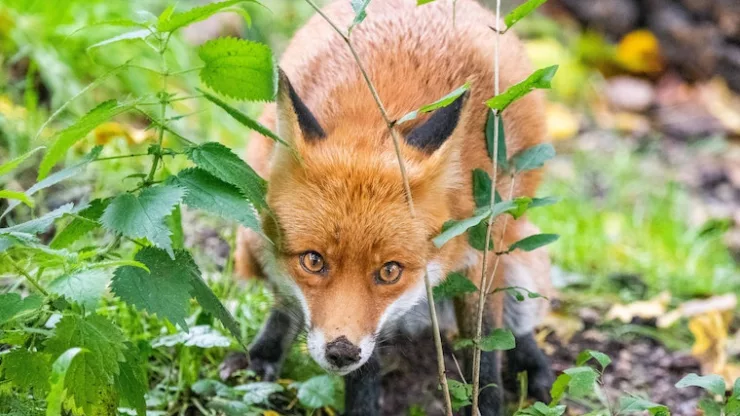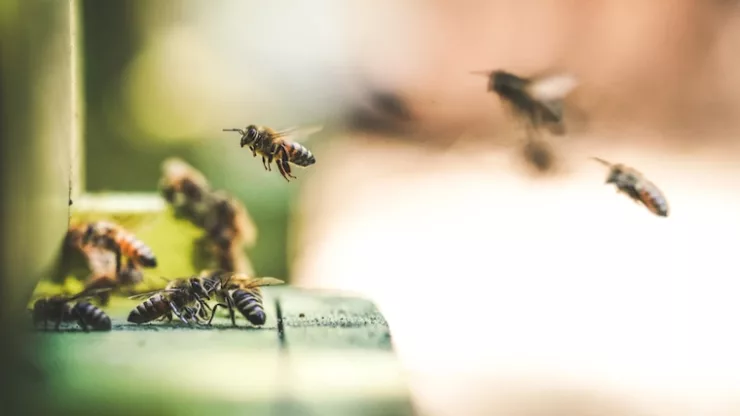Urban herons are fascinating creatures that have adapted to living in the midst of human habitats.
Their presence in urban areas has piqued the curiosity of many bird enthusiasts, but observing their behavior and understanding their catch has proven to be quite challenging.
In this article, we will delve into the world of urban herons, crack the mystery of their catch, and provide strategies for successful urban heron watching.
Jump to Section
Introduction
The urban environment is not typically associated with the presence of herons.
However, in recent years, these majestic birds have made their way into cities and towns around the world.
As such, they have become an important subject of study for researchers and bird enthusiasts alike.
Understanding the Behavior of Urban Herons
The Prevalence of Urban Herons
Urban herons are becoming increasingly common in cities and towns around the world.
Many of these birds have adapted to living in urban areas, and some have even established permanent breeding populations.
The Challenges of Studying Urban Herons
Studying urban herons presents a unique set of challenges. These birds are often found in areas that are difficult to access, and their behavior can be elusive.
Additionally, their presence in urban areas can be affected by human activity.
The Importance of Studying Urban Herons
Despite the challenges, studying urban herons is important for a number of reasons.
These birds provide valuable insights into how wildlife adapts to urban environments, and they can also serve as indicators of the health of urban ecosystems.
The Urban Heron’s Catch: A Mystery Unraveled
Common Prey of Urban Herons
Urban herons feed on a variety of prey, including fish, amphibians, reptiles, and small mammals.
They are opportunistic feeders and will catch whatever prey is available in their environment.
Factors Affecting the Urban Heron’s Catch
Several factors can affect the urban heron’s catch. These include habitat quality, prey availability, and human activity.
Techniques Used by Urban Herons to Catch Prey
Urban herons use a variety of techniques to catch their prey.
These include standing still and waiting for prey to come within striking distance, stalking their prey, and diving into the water to catch fish.
The Role of Habitat in the Urban Heron’s Catch
Habitat quality is an important factor in the urban heron’s catch. Herons need access to clean water and suitable prey in order to thrive in urban environments.
The Impact of Human Activity on the Urban Heron’s Catch
Human activity can have a significant impact on the urban heron’s catch.
For example, pollution can affect the quality of water and prey, while development can destroy important habitat.
Cracking the Case: Strategies for Successful Urban Heron Watching
Finding the Best Spots for Urban Heron Watching
Finding the best spots for urban heron watching can be a challenge. However, areas with water, such as ponds, lakes, and rivers, are often good places to start.
Identifying Urban Heron Behavior
Identifying urban heron behavior can be tricky, but there are a few key things to look for. These include the heron’s posture, movements, and vocalizations.
Recording Urban Heron Activity
Recording urban heron activity can be a valuable contribution to citizen science efforts. Observations can be recorded using a notebook or smartphone app.
Contributing to Citizen Science Efforts
Citizen science efforts are an important way to contribute to our understanding of urban herons.
By participating in these efforts, individuals can help collect data that can be used to inform conservation efforts.
The Importance of Urban Heron Conservation
The Threats Facing Urban Herons
Urban herons face a number of threats, including habitat loss, pollution, and human disturbance. These threats can impact both the herons themselves and the ecosystems they inhabit.
The Role of Citizen Science in Urban Heron Conservation
Citizen science plays an important role in urban heron conservation.
By contributing data and observations, individuals can help inform conservation efforts and advocate for the protection of urban heron habitat.
The Need for Urban Planning that Supports Urban Heron Habitat
Urban planning that supports urban heron habitat is essential for the long-term conservation of these birds.
This includes preserving and restoring wetland and riparian habitats, as well as reducing pollution and human disturbance.
The Importance of Protecting Urban Herons for Biodiversity and Ecosystem Health.
Protecting urban herons is not only important for the birds themselves but also for the health of urban ecosystems.
Herons play an important role in controlling populations of prey species and maintaining the balance of these ecosystems.
Frequently Asked Questions
What is the difference between a heron and an egret?
Herons and egrets are both members of the family Ardeidae. The main difference between the two is their size and coloration.
Herons are generally larger and have gray or blue-gray plumage, while egrets are smaller and have white or cream-colored plumage.
What is the lifespan of an urban heron?
The lifespan of an urban heron depends on a variety of factors, including habitat quality, food availability, and predation.
In general, herons can live up to 25 years in the wild.
Are urban herons dangerous to humans?
Urban herons are not typically dangerous to humans. However, they can become aggressive if they feel threatened or if their nests are disturbed.
How can I help conserve urban herons?
There are several ways to help conserve urban herons, including participating in citizen science efforts, advocating for the protection of wetland and riparian habitats, and reducing pollution and human disturbance in urban areas.
I’m a nature enthusiast and creator of Metro Wilds and have spent years exploring the great outdoors.
With a passion for environmental conservation and sustainability, I have dedicated my career to writing about the beauty and wonders of nature, as well as the threats facing our planet.
Contact me at [email protected] for assistance.





